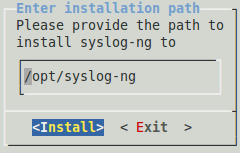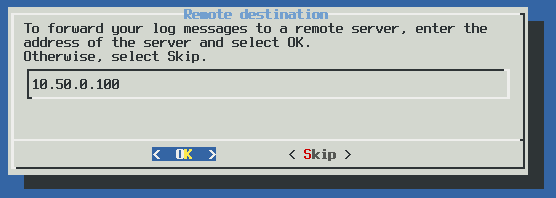This section describes how to install the syslog-ng PE application interactively using the binary installer. The installer has a simple interface: use the TAB or the arrow keys of your keyboard to navigate between the options, and Enter to select an option.
-
To install syslog-ng PE on clients or relays, complete Installing syslog-ng PE in client or relay mode.
-
To install syslog-ng PE on your central log server, complete Installing syslog-ng PE in server mode.
-
To install syslog-ng PE without any user-interaction, complete Installing syslog-ng PE without user-interaction.
NOTE: The installer stops the running syslogd application if it is running, but its components are not removed. The /etc/init.d/sysklogd init script is automatically renamed to /etc/init.d/sysklogd.backup. Rename this file to its original name if you want to remove syslog-ng or restart the syslogd package.









